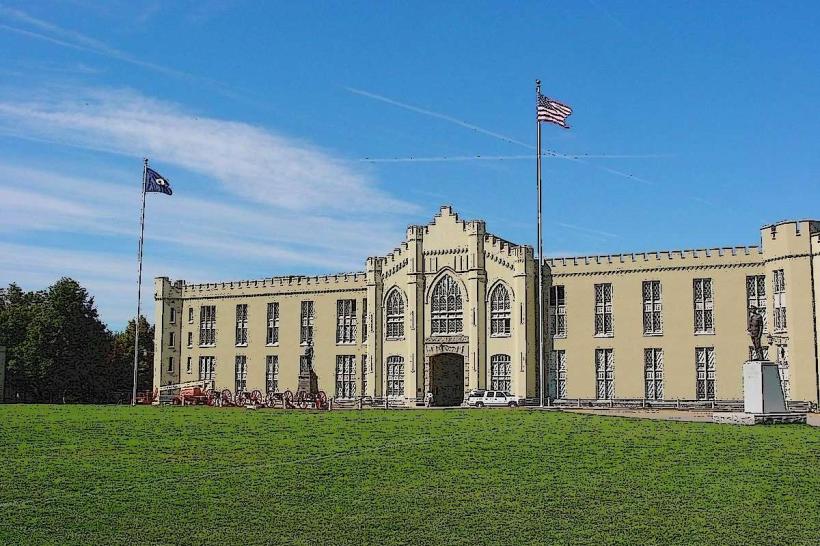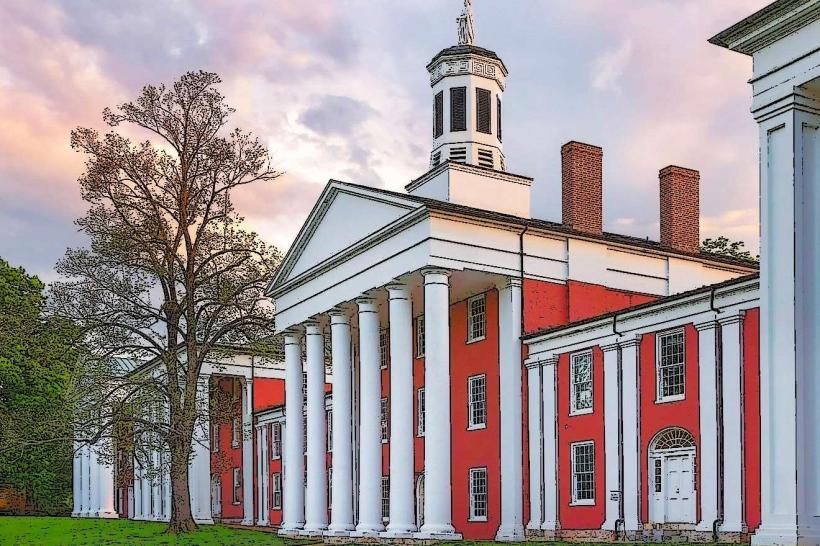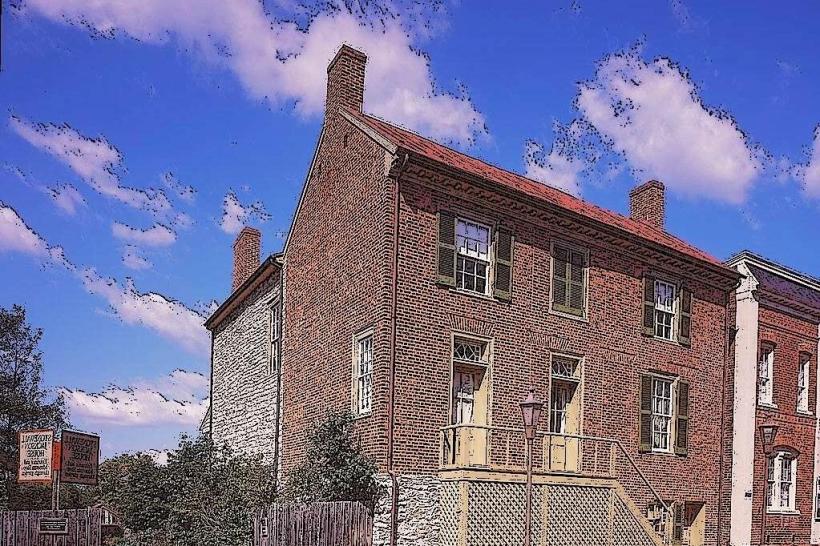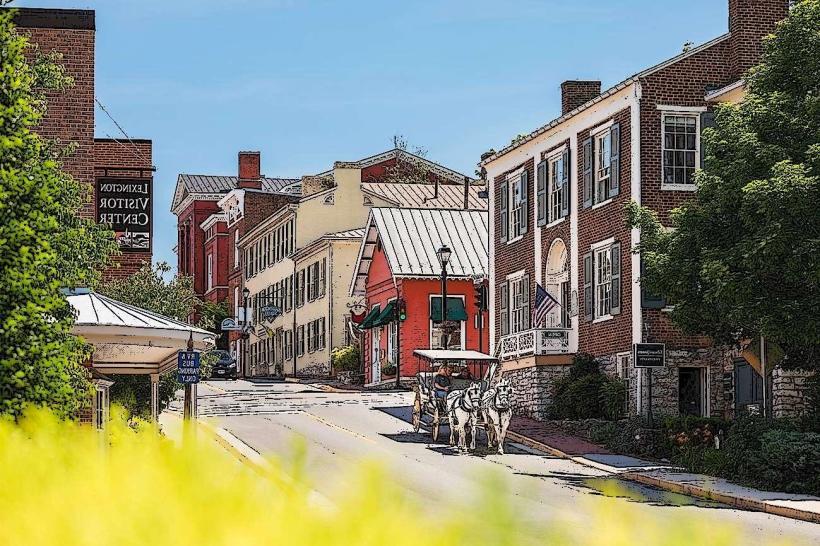Information
Landmark: Lee Chapel and Museum (University Chapel and Galleries)City: Lexington
Country: USA Virginia
Continent: North America
Lee Chapel and Museum (University Chapel and Galleries), Lexington, USA Virginia, North America
Lee Chapel and Museum, officially known today as University Chapel and Galleries, is a historically and culturally significant landmark located on the campus of Washington and Lee University in Lexington, Virginia. Built between 1867 and 1868 during Robert E. Lee’s presidency of the university, the chapel serves multiple purposes: a memorial to General Lee, a mausoleum for the Lee family, a museum that documents the university’s history, and a functioning chapel for university events.
Historical Significance
The chapel was constructed shortly after the American Civil War, at a time when the South was rebuilding and redefining itself. Robert E. Lee, having accepted the presidency of Washington College (the university’s name at that time), wanted to create a space that honored the legacy of his family and offered a place of reflection and education for students and visitors.
The building became the final resting place of Robert E. Lee, his wife Mary Anna Custis Lee, their seven children, and Lee’s parents, including his father, Henry “Light-Horse Harry” Lee, a Revolutionary War hero. This crypt is located in the chapel’s basement and symbolizes the deep connection between the Lee family and the university. Lee’s famous horse, Traveller, is also buried just outside the chapel grounds, adding a unique and personal touch to the memorial site.
Architecture and Design
The chapel is designed in a simple yet dignified Victorian style, reflecting the solemn purpose of the structure. It features a three-story tower and a spacious main hall with classical architectural elements such as columns and large windows that allow natural light to fill the interior. The design is attributed to Colonel Thomas Williamson and possibly George Washington Custis Lee, Robert E. Lee’s eldest son, both of whom were professors at the nearby Virginia Military Institute.
Inside, the chapel’s centerpiece is the marble sculpture called the “Recumbent Lee”, created by artist Edward Valentine. This powerful statue depicts General Lee lying on his deathbed, offering a poignant and humanizing portrait of one of America’s most iconic military figures.
The chapel also houses portraits of George Washington and Robert E. Lee, underscoring the historical ties the university has with these two leaders-Washington through his generous financial support and Lee through his presidency and lasting influence.
Museum and Exhibits
The museum within Lee Chapel is dedicated to the history of the university, the Lee family, and the broader context of American history, especially the Civil War and Reconstruction periods. Visitors can explore:
Robert E. Lee’s preserved office, which remains virtually unchanged since his death in 1870, giving an authentic glimpse into his life and work.
Various artifacts related to the Lee family and Washington and Lee University.
Exhibits explaining the university’s origins, its evolution, and its relationship to both George Washington and Robert E. Lee.
Interpretative displays addressing the complex legacy of Lee and the university’s ongoing engagement with history and memory.
Role in University Life
While Lee Chapel is a memorial and museum, it also continues to serve as a vital part of university life. The chapel hosts convocations, lectures, concerts, and other formal events, seating about 600 attendees with additional balcony seating.
One of the most important ceremonial uses of the chapel is for first-year students, who gather there to hear the university’s student government president speak about the Honor System, a cornerstone of Washington and Lee’s campus culture. This honor system, governed by students themselves, emphasizes personal integrity and responsibility, values closely tied to the university’s identity.
Recent Developments and Renaming
In 2021, the Washington and Lee University Board of Trustees voted to rename Lee Chapel back to its original 19th-century title, University Chapel and Galleries. This change reflected a conscious effort by the university to foster a more inclusive environment and to critically engage with its history, particularly regarding the legacy of Robert E. Lee and the Civil War.
This renaming marked part of a broader initiative to balance historical preservation with a commitment to diversity, equity, and inclusion, signaling the university’s willingness to address its complex past while shaping its future.
Visiting Information and Experience
The University Chapel and Galleries are open to the public, offering guided tours that provide educational insights into the architecture, artifacts, and historical narratives preserved there. Visitors can appreciate not only the solemnity of the Lee family crypt but also the layered stories of American history embodied in the exhibits.
The chapel’s serene setting on Washington and Lee’s campus, with its classical façade and well-maintained grounds, invites reflection and learning, making it a key destination for anyone interested in Civil War history, Southern heritage, and the evolution of American higher education.
Summary
Lee Chapel and Museum (University Chapel and Galleries) stands as a profound symbol of history, memory, and education. It combines architectural beauty, historical preservation, and ongoing university life in one place. The site honors Robert E. Lee and his family, while also serving as a museum that challenges visitors to consider the complexities of American history and the ongoing dialogue about legacy and values within the Washington and Lee University community.






